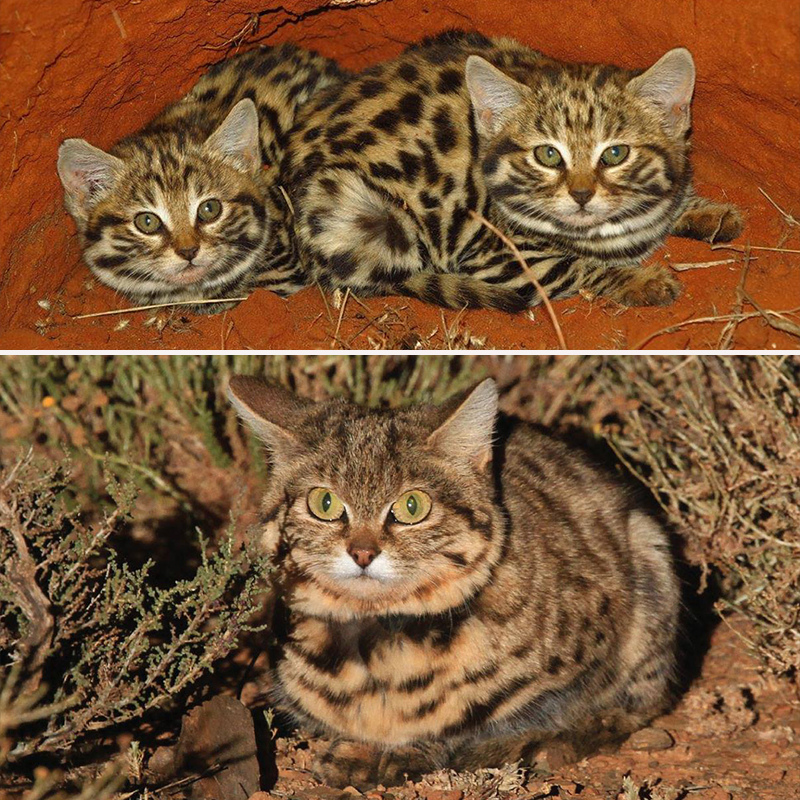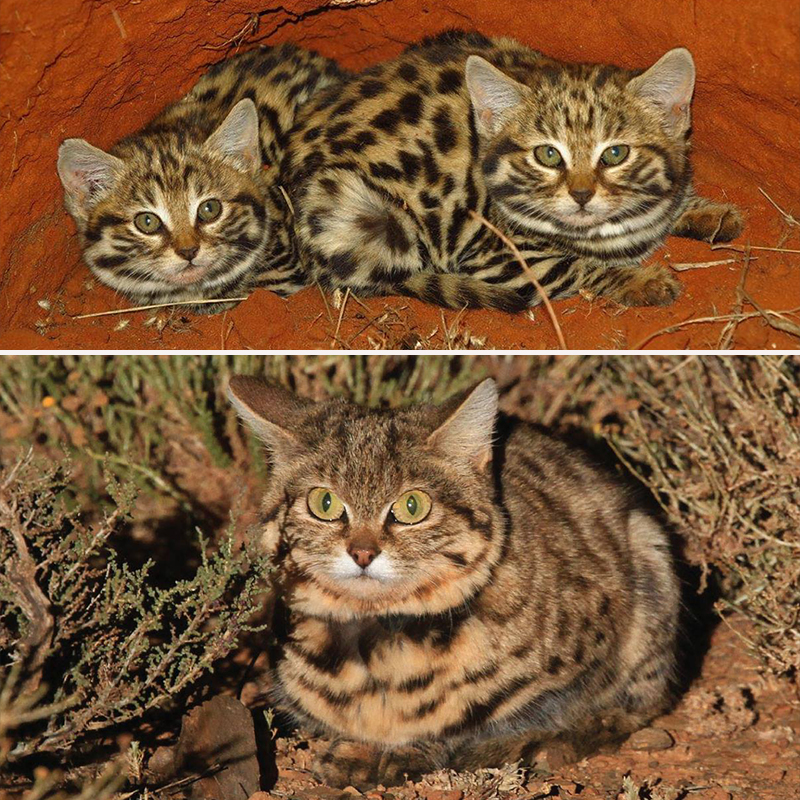People often use the phrase “tiny but mighty,” but there’s one cat species that lives up to it beyond compare. Not long ago, millions of people got a rare glimpse of an almost cartoonish creature that is the deadliest of all cats. And what made that most surprising was that it was a tiny black-footed cat, so absurdly cute and yet savagely lethal.
These small wildcats have incredible hunting prowess and agility, defying belief. That’s why the Afrikaans language calls them “Ant-Hill Tigers,” but they outperform a tiger’s hunting success rate by twelve times! A local legend says a black-footed cat once killed a giraffe by slicing its jugular vein. And researchers have seen them fend off adult jackals eight times their size.
While many Big Cats generally have a 20% hunting success rate, these Yodas of the cat world have a 60% success rate. In comparison, that’s six times a polar bear’s and three times a wolf’s success rate, according to Panthera.
Tiny But Mighty Black-Footed Cat
The BBC Big Cat series appeared later on PBS, showcasing Gyra, a black-footed cat (Felis nigripes), hunting prey in the wild in Southern Africa. Researchers gave her the name, and when people saw her, she suddenly became world famous. So much so that years later, some still confuse her name ‘Gyra’ for her species name.

Gyra the black footed cat via YouTube/Nature on PBS
And there’s also a famous black-footed cat named Gaia at Utah’s Hogle Zoo. Gaia is one of under 40 black-footed cats in captivity in the United States.
Looking at Gyra, below, you can see the intense cattitude staring back at you.
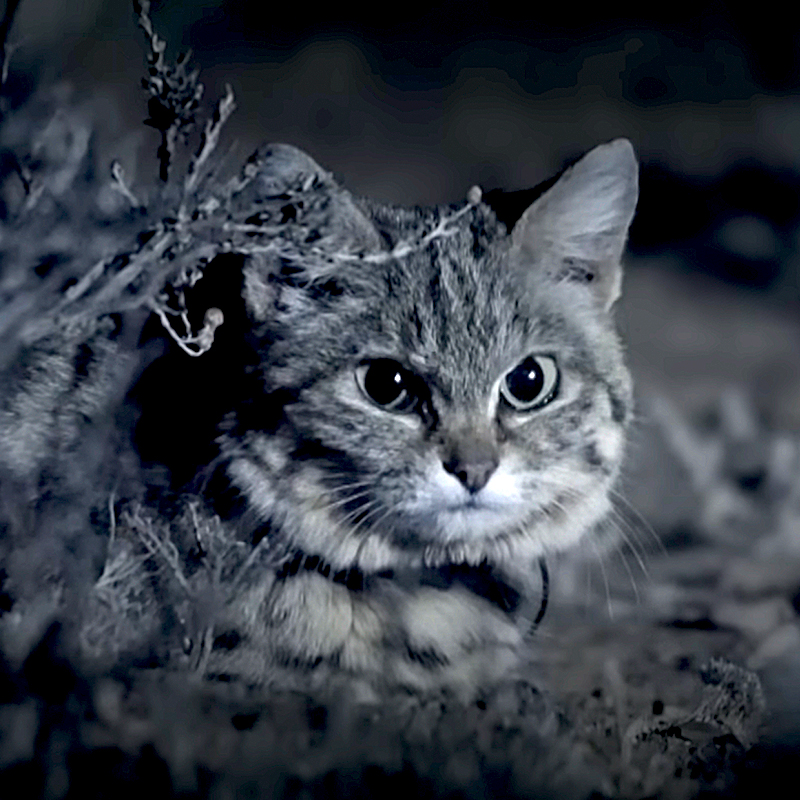
Gyra the black footed cat via YouTube/Nature on PBS
What astonished the world about Gyra, though, was seeing her astonishing hunting in action. At such a small size, she demonstrated how high she could jump after a bird. Although these cats are no more than 14-17 inches long (without the tail), they jump like they are real-life superheroes. According to the Hogle Zoo, cats like Gyra can jump up to five feet in the air and 6½ feet in distance!
After a successful hunt, she gave the fiercest look at the camera as if to say, “Don’t even think about taking my prize, fool!”

Video about Gyra, the black-footed cat by Nature on PBS:
Gyra the Black-Footed Cat Has a Soft Spot
Although not seen in the YouTube clip above, Gyra was roaming 20 miles a night in search of food for her kitten (see video below).
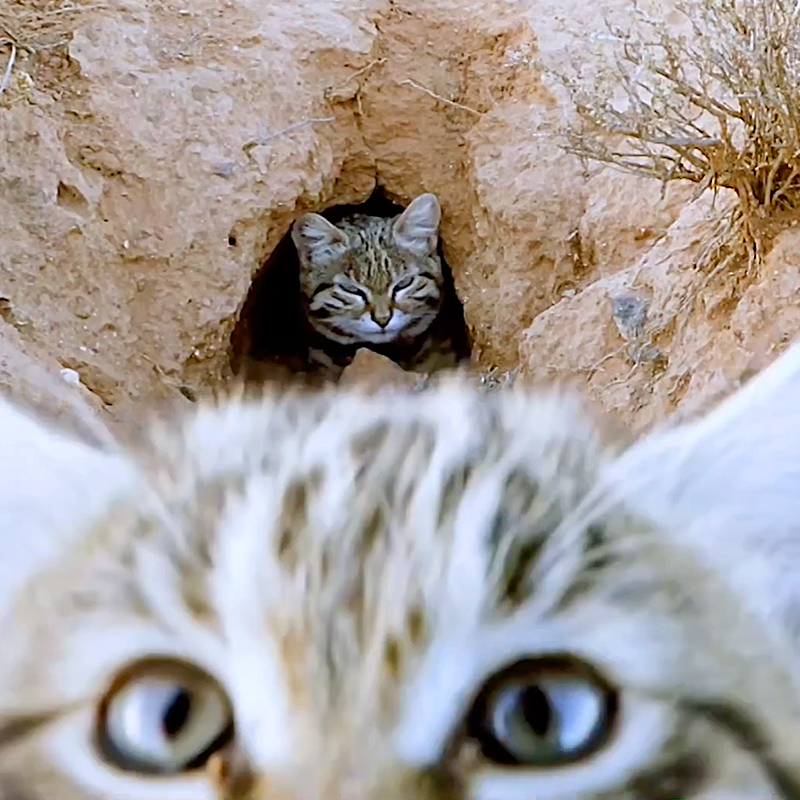
Screenshot via Instagram/Wild Safari Wonders
These cats’ litters tend to be small. After birth, the kittens rapidly grow and care for themselves on their own by about four months old. But you can tell this kitten is as playful and rambunctious as any kitten we’ve seen.
Note: don’t be fooled, these cats don’t have a domestic bone in their bodies.
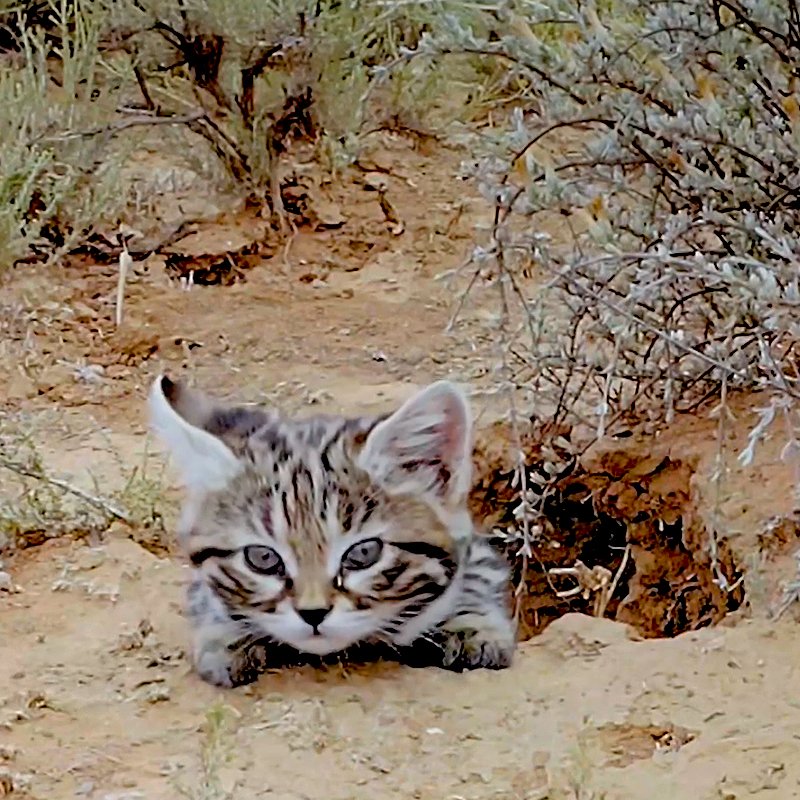
Screenshot via Instagram/Wild Safari Wonders
Black-footed cats can take down 14 small animals each night, which provides them with most of the water they need in their arid environment. Having adapted so well to dry grassland habitats, they don’t enjoy climbing. If they tried to climb, they would be disadvantaged with their stocky legs and a short tail. However, they are skilled at digging and staying cool in other animal’s burrows.
“And the reason for Gyra’s huge appetite is that she’s raising her own little hunter,” states the narrator. “Even the deadliest cat in Africa can have a softer side.”

Screenshot via Instagram/Wild Safari Wonders
These Cats Belong in The Wild
While Gyra’s kitten is unbelievably cute (video is below), these cats are known for their aggressive and ferociously deadly natures. Thus, should never be considered as a pet and remain vulnerable in the wild, where they are mostly solitary. As with most of the world’s wild cats these days, they are declining from threats like poaching, poisoning, and habitat destruction. An IUCN Red List estimate suggests less than 10,000 remain in the wild but black-footed cats are extremely hard to track.

Images via Facebook/Panthera
See Gyra’s kittens in the video shared by Wild Safari Wonders below:
As you might expect, black-footed cats also sound adorable, as you can see below from the Fossil Rim Wildlife Center in Glen Rose, Texas. One person compared it to “meowing with an accent.”
The center’s resident cats have had kittens since 2019, including Gaia.
